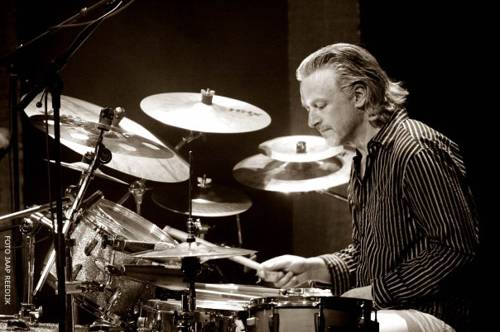
FAQ About The Influence of Afro-Latin Music on Global Jazz

What is Afro-Latin music?
Afro-Latin music refers to genres that resulted from the cultural exchange between African, Indigenous, and European peoples in Latin America. It encompasses a wide variety of styles, including salsa, rumba, samba, bossa nova, and more, emphasizing complex rhythms and percussive elements.

How has Afro-Latin music influenced jazz?
Afro-Latin music has significantly influenced jazz by introducing complex polyrhythms, syncopated beats, and new percussion instruments. This fusion has led to the creation of subgenres such as Latin Jazz, which integrates characteristic Afro-Latin rhythms like the clave and incorporates instruments like congas and bongos.

What are some examples of Afro-Latin influences in jazz music?
Examples of Afro-Latin influences in jazz include the use of clave rhythms, Afro-Cuban percussion in pieces by Dizzy Gillespie, or Stan Getz's collaborations with Brazilian bossa nova artists. Albums like "Salsa Meets Jazz" also showcase this vibrant fusion.

Who are some key musicians known for blending Afro-Latin music with jazz?
Prominent musicians known for blending Afro-Latin music with jazz include Dizzy Gillespie, who incorporated Afro-Cuban elements with Chano Pozo, and Tito Puente, renowned for his Mambo and Latin jazz orchestration. Other notable figures include Mongo Santamaria and Eddie Palmieri.

What is Latin Jazz?
Latin Jazz is a genre that combines jazz elements with Afro-Latin musical components. It highlights rhythmic complexity, typically using Afro-Cuban or Afro-Brazilian rhythms, and incorporates instruments such as congas, bongos, and timbales alongside traditional jazz instruments.

How did the cultural exchange between Africa, Latin America, and the United States shape jazz?
The cultural exchange between these regions enriched jazz music by merging diverse musical traditions. African rhythms and instruments from Latin America were integrated into jazz, fostering innovative styles and leading to new genres like Afro-Cuban jazz. This exchange also nurtured a dialogue around identity and expression in music.

What role did the clave rhythm play in the fusion of Afro-Latin music with jazz?
The clave rhythm serves as a foundational rhythmic pattern in Afro-Cuban music, characterized by its distinctive 3-2 or 2-3 timing. In jazz, the clave provides a structured, syncopated framework that underpins many Afro-Latin jazz compositions, allowing for rhythmically intricate and dynamic performances.

How did Afro-Cuban jazz originate?
Afro-Cuban jazz originated in the 1940s when Cuban musicians began incorporating jazz harmonies and improvisational techniques into traditional Cuban music. Pioneers like Mario Bauzá and Machito spearheaded this integration, blending swing jazz with Afro-Cuban rhythms to create a vibrant, dynamic new sound.

What instruments are typically used in Afro-Latin jazz?
Afro-Latin jazz incorporates both traditional jazz instruments such as saxophones, trumpets, and pianos, and Afro-Latin percussion instruments like congas, bongos, timbales, and maracas. These instruments are crucial for producing the complex, rhythmic textures unique to Afro-Latin jazz.

What is the significance of bossa nova in jazz?
Bossa nova, which originated in Brazil, represents a blend of samba rhythms and jazz harmony. It gained international popularity in the 1960s, notably through the work of artists like Antonio Carlos Jobim and Stan Getz, and has had a lasting impact on jazz through its subtle, laid-back style and sophisticated chord progressions.

How did the improvisational nature of jazz complement Afro-Latin rhythms?
The improvisational nature of jazz complements Afro-Latin rhythms by allowing musicians to experiment with intricate rhythmic patterns and dynamic expressions. This synergy enhances the performance's spontaneity and emotional depth, creating compelling and diverse musical experiences.

Who was Chano Pozo and what was his contribution to jazz?
Chano Pozo was a Cuban percussionist and composer pivotal in the development of Afro-Cuban jazz. His collaboration with Dizzy Gillespie in the 1940s infused jazz with Cuban rhythms and introduced instruments like the conga, significantly enriching the jazz idiom and paving the way for future Afro-Latin jazz innovations.

What are some well-known jazz standards with Afro-Latin influences?
Some well-known jazz standards with Afro-Latin influences include "Manteca" by Dizzy Gillespie and Chano Pozo, "The Girl from Ipanema" by Antonio Carlos Jobim, and "Afro Blue" by Mongo Santamaria. These pieces integrate characteristic Afro-Latin rhythms and have become staples in jazz repertoire.

What is the difference between Afro-Cuban jazz and traditional jazz?
Afro-Cuban jazz differs from traditional jazz mainly through its rhythmic structure and instrumentation. While traditional jazz typically relies on swing and bebop styles, Afro-Cuban jazz incorporates complex rhythms such as the clave and utilizes Afro-Latin percussion instruments like congas and bongos, offering a distinct sound.

How has the fusion of Afro-Latin music and jazz evolved over time?
The fusion of Afro-Latin music and jazz has continuously evolved, with new artists incorporating diverse influences and technologies. Beginning with early collaborations in the 1940s, it has expanded into various global styles, reflecting ongoing cultural exchanges and the innovative spirit of both genres.

Can you give examples of modern musicians continuing the fusion of Afro-Latin music and jazz?
Modern musicians continuing this fusion include artists like Arturo Sandoval, who blends jazz with Cuban influences, and Esperanza Spalding, known for integrating Afro-Latin rhythms in her work. Their music exemplifies the ongoing vibrancy and evolution of Afro-Latin jazz.

How did Afro-Latin music influence jazz dance styles?
Afro-Latin music has influenced jazz dance styles by introducing movements that reflect the dynamic rhythms of Afro-Cuban and Brazilian music. This includes dances like the mambo, cha-cha-cha, and salsa, each incorporating jazz's improvisational and expressive qualities to create lively, engaging performances.

What role did New York City play in the integration of Afro-Latin music and jazz?
New York City played a central role in the integration of Afro-Latin music and jazz, serving as a melting pot where musicians from diverse backgrounds collaborated. Key venues like the Palladium Ballroom became cultural hubs where Afro-Cuban music and jazz merged, leading to the birth and growth of Latin jazz.

How does Afro-Latin jazz impact today's global music scene?
Afro-Latin jazz impacts today's global music scene by continuing to inspire cross-cultural collaborations and genre innovations. Its influence is evident in contemporary music, where artists blend these elements into pop, hip-hop, and more, fostering a rich, diverse musical landscape that resonates globally.

What is the significance of rhythmic patterns in Afro-Latin jazz?
Rhythmic patterns are fundamental to Afro-Latin jazz, offering complexity and driving energy that define the genre. Patterns like the clave provide a framework for both ensemble cohesion and individual expression, allowing musicians to explore rhythmic intricacies that enhance the music's vibrancy and appeal.
